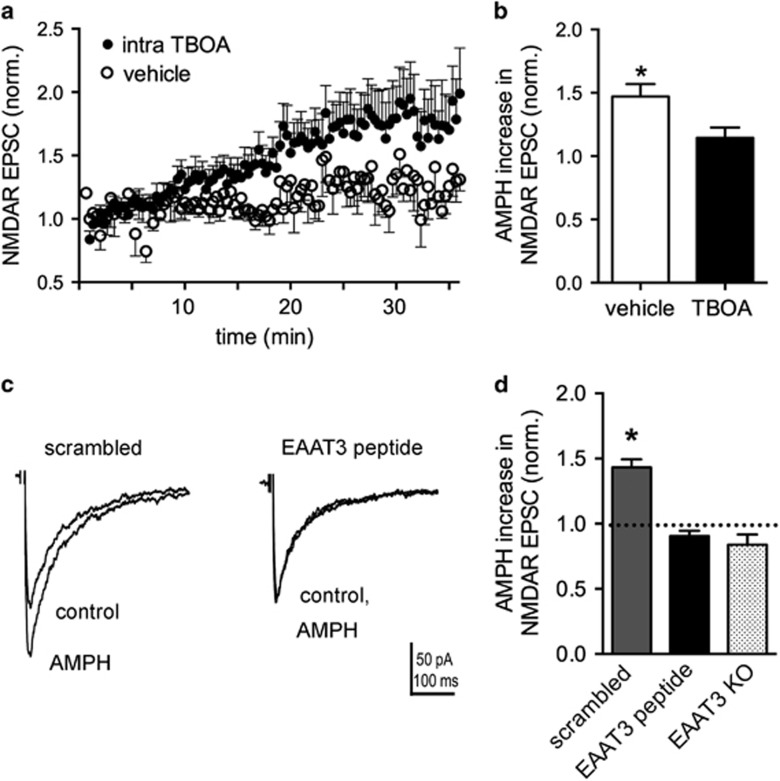Figure 2.
Excitatory amino acid transporter 3 (EAAT3) internalization is involved in the potentiation of NMDA receptor (NMDAR) excitatory postsynaptic currents (EPSCs) by amphetamine (AMPH). (a) Time course after breaking into whole-cell mode (t=0 min) with pipette solutions containing threo-β-benzyloxyaspartate (TBOA) (500 μM; n=9) or vehicle control (n=6). (b) Summary data normalized to baseline EPSCs (first 4 min) showing that intracellular TBOA occludes subsequent AMPH potentiation of NMDAR EPSCs (*p<0.05). (c) Averaged NMDAR EPSCs with either the scrambled peptide or the EAAT3 inhibitor peptide in the whole-cell pipette solution. AMPH potentiation is blocked in cells recorded with the EAAT3 inhibitor peptide in the pipette solution. (d) Summary data normalized to baseline (first 4 min) showing a significant potentiation of NMDAR EPSC amplitudes with the scrambled peptide (n=4, *p<0.05), but no potentiation with the EAAT3 inhibitor peptide (n=7). AMPH-mediated potentiation is absent in EAAT3 knockout (KO) mice (n=10).

